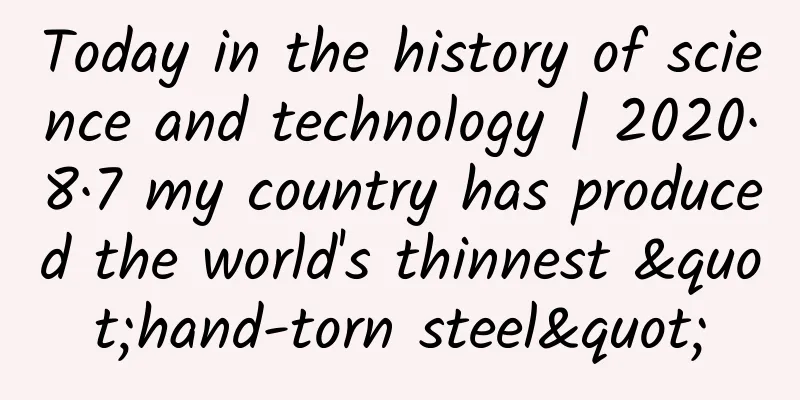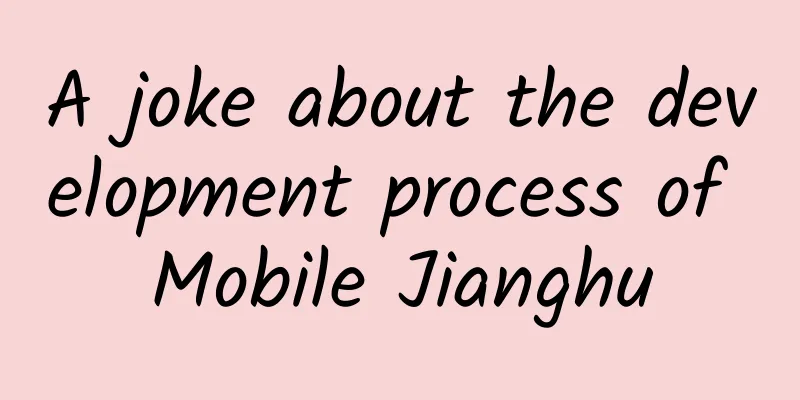Today in the history of science and technology | 2020·8·7 my country has produced the world's thinnest "hand-torn steel"

|
It is a roll of steel, but when it is unfolded, it is as thin as a cicada's wing and can be easily torn apart by hand... "Hand-torn steel" is a wide and ultra-thin stainless steel precision foil. On August 7, 2020, Taiyuan Iron and Steel (Group) Co., Ltd. (hereinafter referred to as "TISCO") broke through the limits of rolling and other processes and successfully developed "hand-torn steel" with a thickness of only 0.015 mm. This steel is currently the widest and thinnest stainless steel precision foil in the world. Its lightness and toughness make it shine in the fields of new energy vehicle battery manufacturing. Wide width ultra-thin precision stainless steel strip is widely used In the fields of aerospace, national defense, medical equipment, petrochemicals, precision instruments, etc., there is an ultra-thin precision stainless steel strip, which is widely used for its wide width and ultra-thin characteristics. Because of the difficulty of process control and high product quality requirements, the core manufacturing technology of this steel has long been in the hands of developed countries such as Japan and Germany. For a long time, my country was unable to produce it independently and could only import it at high prices, and it cost hundreds of yuan to import 1 gram. In recent years, with the rapid development of aerospace, nuclear power, new energy and other industries, the domestic market demand for this ultra-thin precision stainless steel strip has continued to grow. However, the key technology is controlled by others, making the contradiction between supply and demand increasingly serious. In order to break this dilemma and produce this steel with a thickness of only 1/4 of ordinary printing paper, in 2016, Taigang Precision Strip formed a young "hand-torn steel" research team, which consists of 14 members with an average age of only 30. The team was faced with huge challenges as soon as it was established. To produce "hand-torn steel", four major technical difficulties must be overcome: rolling, annealing, high-grade surface control, and performance control. During the production process, the 260-meter-long strip channel is the most prone to problems, and strip breakage occurs frequently. Each time the strip breaks, it takes more than ten hours to restore the equipment, which makes the team members feel frustrated, and some even begin to waver. However, the team leader encouraged the team members to persevere and advocated the concept of innovation and tolerance of failure. The scientific research team made it clear that the cost of innovation would not be assessed and every bit of progress would be rewarded in a timely manner. This incentive method greatly stimulated the enthusiasm of scientific researchers for innovation and strengthened their confidence in innovation. Good steel is used on the "blade" After two years of arduous efforts, the research team overcame hundreds of equipment and process problems and conducted 711 experiments. They found a method to produce stainless steel precision foil with a thickness of only 0.02 mm and a width of 600 mm from more than 40,000 combinations of rollers. This breakthrough makes TISCO Precision Strip the only company in the world that can mass-produce wide-width ultra-thin stainless steel precision foil. In August 2020, the team once again broke through the limit and successfully produced "hand-torn steel" with a thickness of only 0.015 mm. This ultra-thin stainless steel foil can be used to manufacture new energy vehicle batteries, providing key materials for the green energy industry. It is this perseverance and spirit of hard work that has enabled TISCO to have the ability and confidence to cope with changes and ultimately achieve a brilliant transformation and upgrading. The advent of domestically produced "hand-torn steel" not only occupies the high ground of new technology and fills the gap in the industrial chain, but also changes the past situation of dependence on imports, turning "buying at high prices" into "making at affordable prices", and completely solving the "stuck neck" problem. Today, "hand-torn steel" has been widely used in high-tech fields such as sensors and energy storage batteries. This fully proves that using good steel on the "blade" and improving the quality of supply through scientific and technological innovation is an important secret for Shanxi Taigang and even the entire Chinese steel industry to achieve unexpected growth. The outstanding performance of "hand-torn steel" in technical research and standard setting demonstrates the hard power of Made in China and sets a new benchmark for the global manufacturing industry. 0.015 mm, "keep going down" 0.015 mm "hand-torn steel" is currently the widest and thinnest "hand-torn steel" in the world. Reducing the thickness by 0.005 mm is far from being as simple as continuing to "roll" it down. Under the huge rolling mill, 0.015 mm is an almost imperceptible existence. "It's like driving on the highway with your eyes closed." Liao Xi, chief precision foil process engineer of TISCO, explained. But why dare to do it? "Because after the research and development of 0.02 mm, we have a thorough understanding of the materials, equipment, processes, and technologies. We know what problems will occur in the rolling process and whether we can proceed further. 0.015 mm 'hand-torn steel' has been mass-produced, and on this basis, we are still continuing to explore lower levels." The difference between 0.02 mm and 0.015 mm is only 0.005 mm, which is negligible in daily life. But when used in products, it can make a huge difference. Liao Xi gave an example. If used to make battery coatings, the battery capacity of 0.015 mm material can increase by 17% with the same volume. In the eyes of TISCO Precision Strip Steel, the biggest motivation for making steel thinner is still market demand. For example, in the past, many products were made of copper foil and aluminum foil, but at the same thickness, steel foil is 3-4 times stronger than them. Therefore, on the basis of ensuring performance, steel can be "made a fuss from the thickness". The thinner the material, the lighter the product... "Light, thin, short and small" with improved performance, there is great potential for replacing non-ferrous metal foil with steel. "When the steel is rolled so thin, you can see everything, including dust, particles and impurities. The successful development of 'hand-torn steel' can be regarded as a small revolution in the steel industry." Fan Zhongye, deputy secretary of the Party Committee of TISCO Precision Strip Steel Company, who has been in the industry for more than 30 years, said, "0.02 mm is just the starting point. From here, there is a constantly updated 'hand-torn steel' product series." From 0.02mm to 0.015mm, TISCO's "hand-torn steel" has formed more than 20 series of varieties in three categories, and has more than 30 core patents for stainless steel. More intuitive is the market performance of "hand-torn steel". Ceiling-level application of "hand-torn steel" In TISCO's laboratory, there is a piece of material about the size of a mobile phone screen, as thin as a cicada's wing and translucent, allowing light to pass through gently - it is really hard to believe that this is actually a piece of steel. It turns out that the surface of this small piece of material is densely and evenly distributed with more than 2 million small holes. These small holes are difficult to see with the naked eye, but under a 200x microscope, neat rows of small holes are visible. It is reported that this is the expansion alloy used for mask plates, an upgraded version of "hand-torn steel", which is the main consumable material for the production of OLED flexible screens and is widely used in the production of smartphones. "This is the 'ceiling' level product in the 'hand-torn steel' series." Liao Xi said that there are more than 2 million holes on the surface of the steel, and even a slight mistake cannot be tolerated, and there must be no mosquitoes, vibrations, dust at the production site... Even the slightest defect cannot be tolerated, which is almost an extreme challenge to the level of craftsmanship. Research and development, benchmarking, trial production, feedback, improvement... In April last year, this product finally achieved mass production and is now supplied to many customers across the country, breaking the situation of high dependence on imports in the past. For customers, "hand-torn steel" is raw material that needs to be processed. Customers come from all walks of life, which also means that each batch of "hand-torn steel" products is personalized research and development and customization, and different performance, surface, toughness, and plate shape must be created according to different customer needs. "New products constantly propose new indicators in new applications and promote the continuous optimization of new materials, which also greatly promotes the innovative research and development of 'hand-torn steel'." Liao Xi said that the pursuit of technology is endless, and no "hand-torn steel" product is completely finalized. Innovation and research and development are always on the way. Comprehensive from People's Daily Online and Science Popularization China |
<<: Why did a nanomaterial researcher spark a passion for track cycling?
>>: It’s the beginning of autumn! Who put on weight last year and hasn’t lost it this year?
Recommend
Alipay vs. WeChat: Lessons for Operations
Following the Circles, Alipay has made another bi...
Telecom's unlimited data package changes the concept: the network will be disconnected if the data exceeds 100GB
Traffic has always been a key factor restricting ...
I spent a lot of money to test 38 facial cleansers: For oily skin, dry skin, and sensitive skin, just read this article!
Everyone’s skin care steps vary greatly, but this...
Wuhan Tongka real-name authentication! How to download? How to use? Detailed guide attached!
Now Wuhan is gradually restoring its normal life....
After the stock price soared, is Thunder Wanke Coin really a scam?
Recently, something extraordinary seems to have h...
Super-burning new Blue Whale power, extraordinary driving experience, and less than 150,000 yuan, can Changan UNI-Z take the lead?
Recently, Changan Automobile released more offici...
3 types, processes and key points of conference event planning
There are many types of meetings, such as annual ...
How much does it cost to develop a children’s clothing mini program in Jilin?
More and more businesses are paying attention to ...
Data | Big data explains whether Internet car manufacturing is reliable
The video maker is going to make cars, the home a...
Thoughts on a TV’s popularity: 3 key words for marketing and self-propagation
If time goes back a few decades, we might still b...
Excellent young scientists used to play mahjong as a toy when they were young
In all walks of life, there are young people who ...
As soon as I mentioned a certain product, I received a push notification. Are we being eavesdropped? | Expo Daily
Your best "insider" in the scientific c...
A guide to starting a huge live broadcast
Optimizers all say that Juleliang Qianchuan is go...
The most miserable death of an animal: escaping from its natural enemies but being killed by itself?
On Earth, basically every animal has natural enem...
Does eating baked sweet potatoes often cause cancer? Not true. The sweet potatoes that really shouldn't be eaten are →
gossip It's the season for eating sweet potat...









